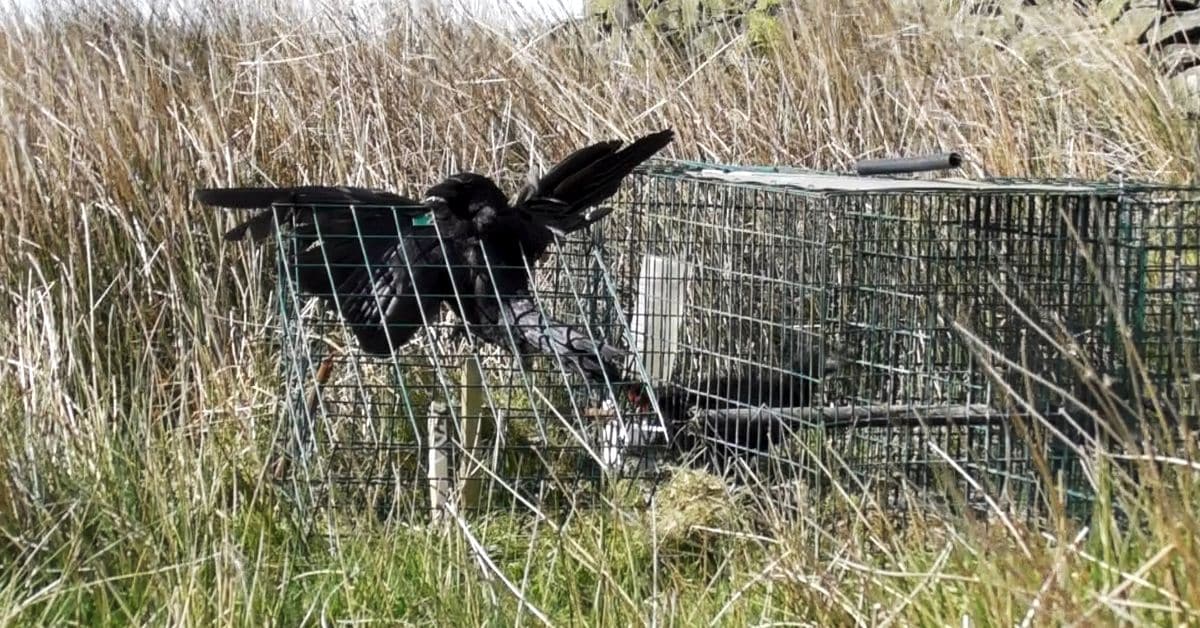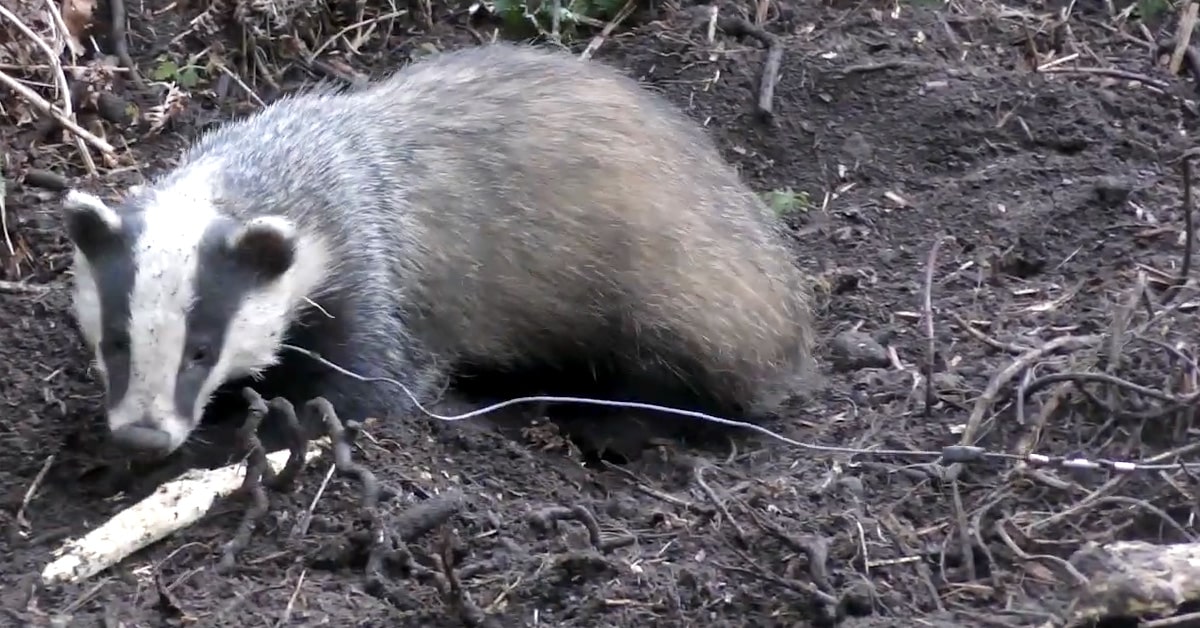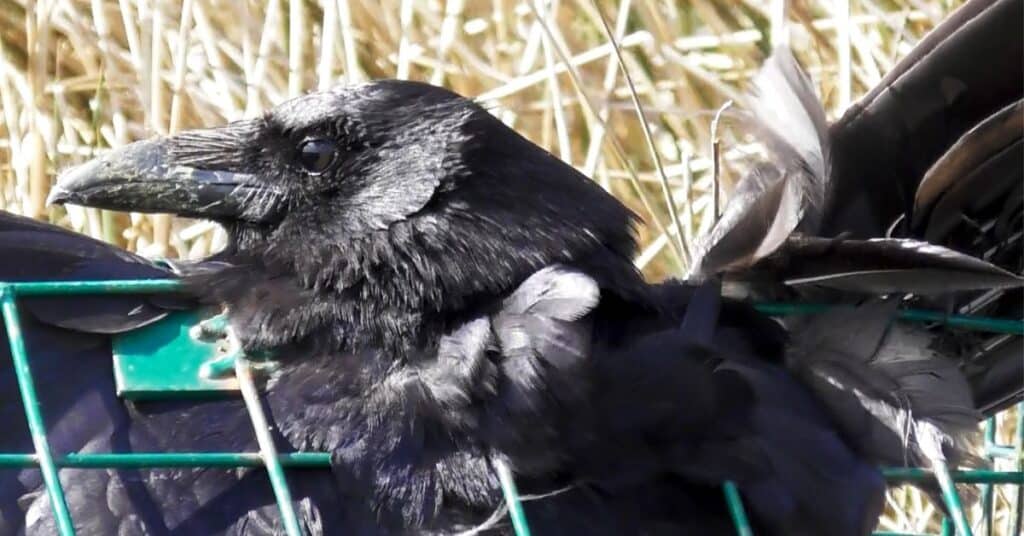Moorland Monitors has captured footage of a crow caught up and unnaturally twisted in a ‘clam trap’ on open access land in the Peak District. And it shows what one person can do with just a phone.
Moorland Monitors shared phone-filmed footage showing two crows in two separate cages set next to each other. It was filmed on the notorious Moscar grouse shooting estate. One cage is a traditional-looking Larsen cage containing a ‘decoy’ crow, whose presence attracts local crows that want to push them out of their territory.
Unfortunately, the second cage contains one such territorial crow. It is a so-called ‘clam trap’, a type of Larsen trap that is set open and then snaps shut when a bird lands on it. Closed clam traps are supposed to contain the bird. But in the footage Moorland Monitors shared, the trap has closed across the crow.
As a result, the bird is trapped with their body and part of the wings inside the cage, but part of the wings and their head outside. The cage has closed across the bird’s neck.
Moorland Monitors said the person that found the trapped crow called the RSPCA for help. Staff from the organisation attended and took the crow away. However, due to the extent of the injuries, the RSPCA had to euthanise the crow.
Clam traps
The group told Protect the Wild that the footage was filmed on 15 May at Stanage, in the Peak District. The traps were set on open access land within the Moscar Estate, which has a history of cruel and criminal behaviour.
While clam traps are legal, they must also obey regulations set out in the general licence for shooting (GL33). The licence specifically states that:
“The trap must not shut tightly along the majority of the length of the meeting edges, to avoid injuring the animal when it closes.”
As a result, Moorland Monitors said:
“The one at Stanage clearly does shut tightly in this way and therefore appears to be in breach of the licence.”
And the group added that this is just one example of how “unregulated corvid trapping is causing untold suffering”.

Legal but cruel
Clam traps have faced scrutiny in the past. Raptor Persecution UK (RPUK) took the devices to task in 2012 and 2013 during a debacle by Scottish Natural Heritage.
The governmental conservation body – today known as NatureScot – had opened a public consultation into its use of clam traps. Despite an overwhelming response against using the devices, including by the RSPB and SSPCA, Scottish Natural Heritage announced it would permit clam trap use in the general licence. They remain legal in Scotland to this day, with some very loose restrictions attached.
RPUK questioned at the start of the debacle in 2012 how Scottish Natural Heritage hadn’t simply outright banned clam traps “on welfare grounds”. And Moorland Monitors echoed this when it spoke to Protect the Wild:
“We can’t see how they are allowed under the Animal Welfare Act, because they almost inevitably cause unnecessary suffering (physical injury).”
A 2016 Scottish Natural Heritage review of traps claimed that of the “risk of injury at the point of capture seems to be low in Larsen-mate traps”. This was based on recordings of the devices trapping 36 crows during the study.
Yet this is almost a moot point if gamekeepers are setting the traps illegally in the first place. Moorland Monitors’ video is one such example, and RPUK reported on another in April.
Par for the course
The Moscar estate’s history of criminal behaviour goes some way to explaining the scene that the walker stumbled on.
It was exposed three times by Hunt Investigation Team (HIT): in 2017, when it revealed widespread illegal behaviour by gamekeepers; in early spring 2020, when it discovered snares targetting badgers; and in May of the same year, when HIT found a badly injured corvid used as a decoy and two fox cubs exposed to terrible weather while trapped overnight in a cage.
Sadly, the latest infraction against wildlife seems par for the course on Moscar estate. Protect the Wild contacted the RSPCA to ask if it had taken any sort of action against the landowner or gamekeeper following the 15 May discovery. However, it hadn’t responded at the time of publishing.
Furthermore, Moorland Monitors told Protect the Wild that the gamekeeper has continued setting clam traps on the estate.

Recognise, record, report
Despite the sad end for the crow, Moorland Monitors’ video shows that just one person with a phone can have an impact. The clam trap was placed on open access land, meaning it was in a place where anyone can walk without fear of trespass. And the walker not only attempted to help the distressed bird but made a record of what was happening too. Then they shared it with a relevant activist group – in this case, Moorland Monitors.
Recording the information and sharing it publicly is essential. It’s part of what has made anti-hunting groups so successful, and plays an equally important role in holding the shooting industry to account. This conforms to the three Rs: recognise, record, report. By following these simple steps, almost anybody can take action against the cruelties of the shooting industry.
Estates like Moscar don’t like airing their dirty laundry in public, so it’s up to us to make sure they do.
If you’re in the Peak District, please get in touch with Moorland Monitors. Check out our page about how to use the three Rs and become a Protector of the Wild.


